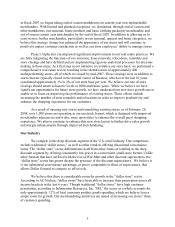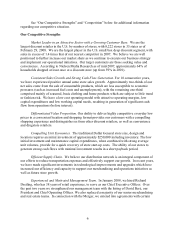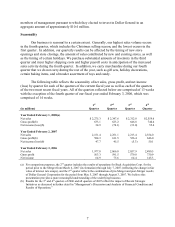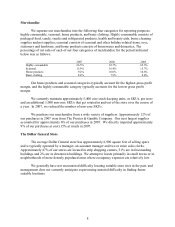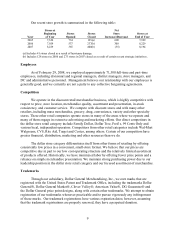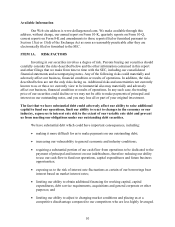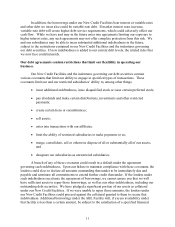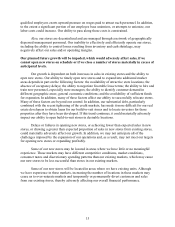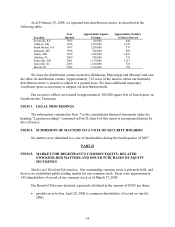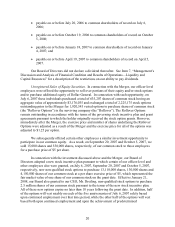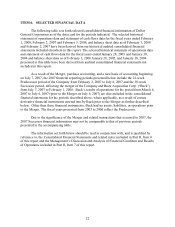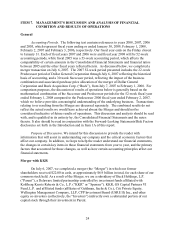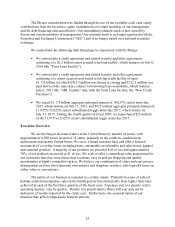Dollar General 2007 Annual Report Download - page 17
Download and view the complete annual report
Please find page 17 of the 2007 Dollar General annual report below. You can navigate through the pages in the report by either clicking on the pages listed below, or by using the keyword search tool below to find specific information within the annual report.15
qualified employees exerts upward pressure on wages paid to attract such personnel. In addition,
to the extent a significant portion of our employee base unionizes, or attempts to unionize, our
labor costs could increase. Our ability to pass along those costs is constrained.
Also, our stores are decentralized and are managed through a network of geographically
dispersed management personnel. Our inability to effectively and efficiently operate our stores,
including the ability to control losses resulting from inventory and cash shrinkage, may
negatively affect our sales and/or operating margins.
Our planned future growth will be impeded, which would adversely affect sales, if we
cannot open new stores on schedule or if we close a number of stores materially in excess of
anticipated levels.
Our growth is dependent on both increases in sales in existing stores and the ability to
open new stores. Our ability to timely open new stores and to expand into additional market
areas depends in part on the following factors: the availability of attractive store locations; the
absence of occupancy delays; the ability to negotiate favorable lease terms; the ability to hire and
train new personnel, especially store managers; the ability to identify customer demand in
different geographic areas; general economic conditions; and the availability of sufficient funds
for expansion. In addition, many of these factors affect our ability to successfully relocate stores.
Many of these factors are beyond our control. In addition, our substantial debt, particularly
combined with the recent tightening of the credit markets, has made it more difficult for our real
estate developers to obtain loans for our build-to-suit stores and to locate investors for those
properties after they have been developed. If this trend continues, it could materially adversely
impact our ability to open build-to-suit stores in desirable locations.
Delays or failures in opening new stores, or achieving lower than expected sales in new
stores, or drawing a greater than expected proportion of sales in new stores from existing stores,
could materially adversely affect our growth. In addition, we may not anticipate all of the
challenges imposed by the expansion of our operations and, as a result, may not meet our targets
for opening new stores or expanding profitably.
Some of our new stores may be located in areas where we have little or no meaningful
experience. Those markets may have different competitive conditions, market conditions,
consumer tastes and discretionary spending patterns than our existing markets, which may cause
our new stores to be less successful than stores in our existing markets.
Some of our new stores will be located in areas where we have existing units. Although
we have experience in these markets, increasing the number of locations in these markets may
cause us to over-saturate markets and temporarily or permanently divert customers and sales
from our existing stores, thereby adversely affecting our overall financial performance.


